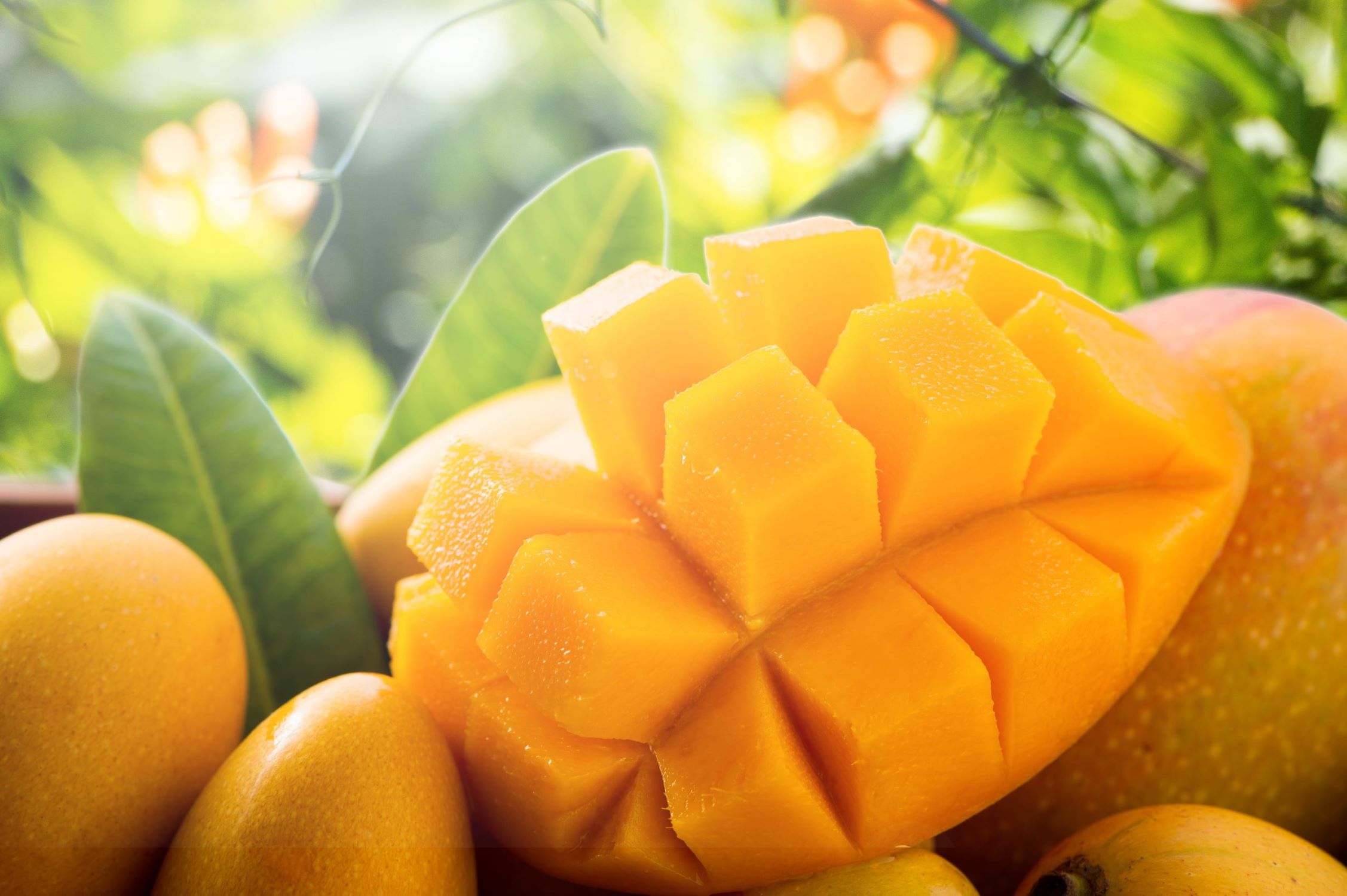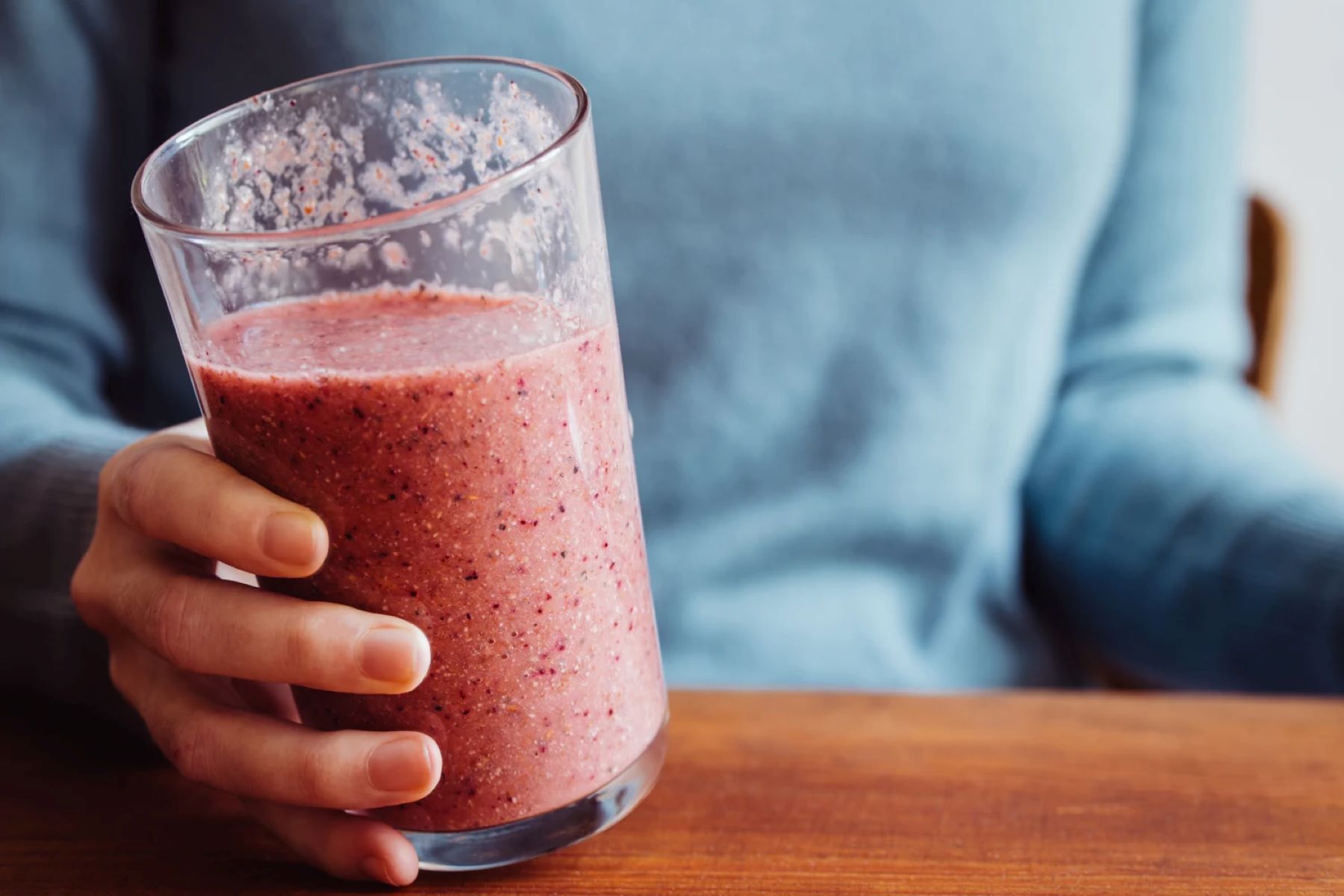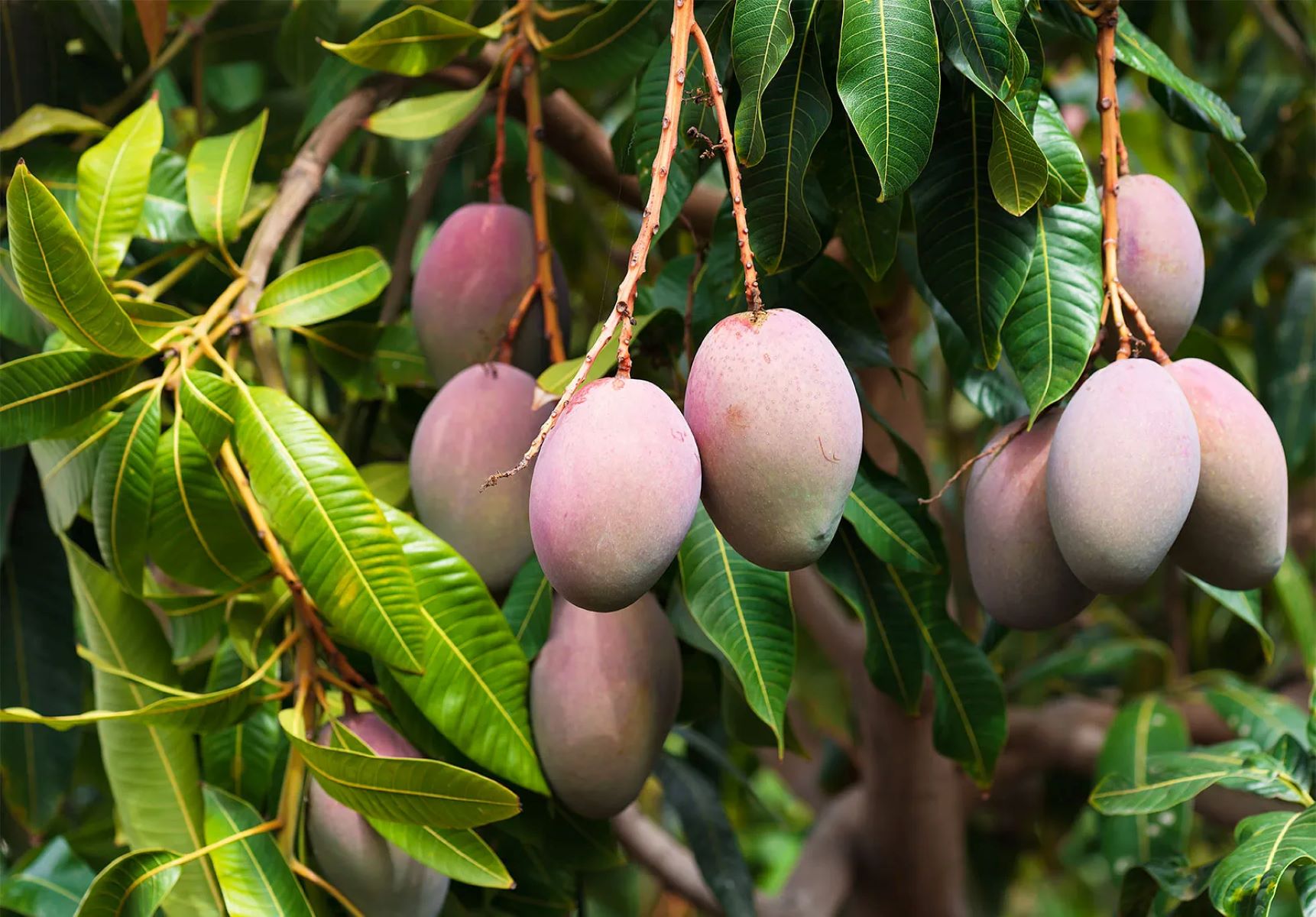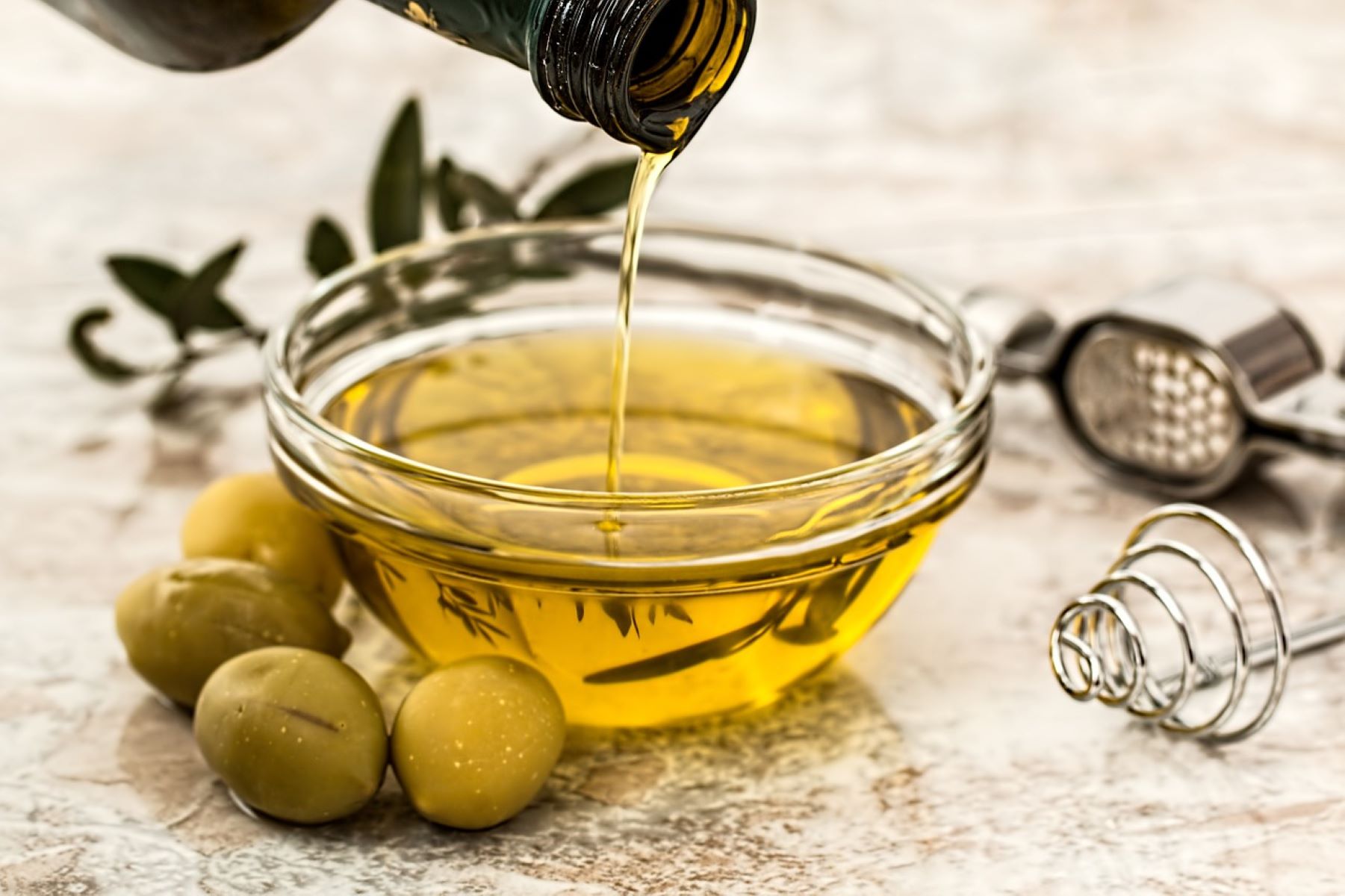Home>Food and Cooking>The Surprising Truth About Mangoes’ Unique Flavors


Food and Cooking
The Surprising Truth About Mangoes’ Unique Flavors
Published: January 5, 2024
Discover the unexpected flavors of mangoes and their unique culinary uses. Explore the fascinating world of food and cooking with this insightful guide.
(Many of the links in this article redirect to a specific reviewed product. Your purchase of these products through affiliate links helps to generate commission for Regretless.com, at no extra cost. Learn more)
Table of Contents
Introduction
Mangoes, often hailed as the "king of fruits," are celebrated for their luscious sweetness, vibrant colors, and tantalizing aroma. These tropical fruits have captivated taste buds around the world for centuries, and their unique flavors continue to intrigue food enthusiasts and scientists alike. While many people are familiar with the delightful taste of a ripe mango, the intricate science behind their diverse flavors often remains a mystery.
In this article, we will embark on a fascinating journey to uncover the surprising truth about mangoes' unique flavors. From the scientific mechanisms that underpin their taste profiles to the environmental and geographical factors that shape their distinct characteristics, we will delve into the multifaceted world of mango flavors. By exploring the impact of ripeness, geography, and other influential factors, we will gain a deeper understanding of what makes mangoes a culinary marvel.
Prepare to be enlightened as we unravel the complexities of mango flavors, shedding light on the elements that contribute to their delectable taste and aromatic allure. Whether you're a devoted mango enthusiast or simply curious about the secrets hidden within this beloved fruit, this exploration promises to unveil the intriguing truths behind mangoes' diverse and captivating flavors.
The Science Behind Mango Flavors
The delectable flavors of mangoes are underpinned by a complex interplay of biochemical compounds that contribute to their distinctive taste profiles. At the core of this sensory experience are a myriad of organic molecules, including volatile compounds, sugars, acids, and other essential components that collectively shape the fruit's flavor.
One of the key contributors to the unique taste of mangoes is the presence of volatile compounds, which are responsible for their captivating aroma. These compounds, such as myrcene, linalool, and terpenes, emit fragrant notes that infuse the fruit with its characteristic floral, fruity, and sometimes spicy undertones. The intricate combination of these volatile compounds creates a symphony of aromas that distinguishes different mango varieties and influences their overall flavor complexity.
Furthermore, the balance of sugars and acids within mangoes plays a pivotal role in defining their flavor profile. The natural sugars, predominantly fructose and sucrose, contribute to the fruit's inherent sweetness, while the presence of citric and malic acids provides a subtle tanginess that enhances the overall taste experience. The harmonious interaction between sweetness and acidity is a hallmark of well-developed mango flavors, eliciting a delightful sensory response that lingers on the palate.
Beyond volatile compounds, sugars, and acids, the ripeness of the mango significantly influences its flavor. As the fruit ripens, enzymatic processes transform starches into sugars, intensifying its sweetness and altering its overall flavor composition. This evolution in flavor as the mango matures underscores the dynamic nature of its taste, offering a spectrum of sensory experiences that cater to diverse preferences.
In addition to these biochemical factors, the genetic makeup of different mango cultivars also contributes to the diversity of flavors. Varieties such as Alphonso, Ataulfo, and Keitt exhibit distinct flavor profiles, ranging from rich and creamy to tangy and tropical, reflecting the genetic nuances that define their unique tastes.
In essence, the science behind mango flavors is a captivating tapestry of biochemical intricacies, genetic diversity, and ripening dynamics. By unraveling the molecular symphony that orchestrates the sensory delight of mangoes, we gain a deeper appreciation for the complexities that underlie their irresistible flavors.
Factors Affecting Mango Flavors
The multifaceted flavors of mangoes are influenced by a myriad of factors that converge to create their distinct taste profiles. These factors encompass a broad spectrum of elements, ranging from environmental conditions and cultivation practices to post-harvest handling and storage. By comprehensively examining the interplay of these influential factors, we can gain valuable insights into the nuanced complexities that shape the flavors of this beloved tropical fruit.
Environmental Conditions:
The environment in which mangoes are cultivated exerts a profound impact on their flavor development. Factors such as climate, soil composition, and sunlight exposure play pivotal roles in shaping the biochemical composition of the fruit. Mango trees thrive in warm, tropical climates with well-drained soil, where they can bask in ample sunlight to facilitate optimal fruit development. The unique combination of temperature, humidity, and soil nutrients in different growing regions contributes to the diverse flavor profiles observed in various mango varieties.
Cultivation Practices:
Cultivation techniques, including irrigation, fertilization, and pest management, also influence mango flavors. Well-regulated irrigation practices ensure that mango trees receive adequate moisture, which is essential for fruit development and sugar accumulation. Additionally, balanced fertilization programs tailored to the specific nutritional needs of mango trees contribute to the optimal synthesis of flavor-enhancing compounds. Furthermore, effective pest and disease management strategies safeguard the health and vigor of the trees, preventing potential stressors that could compromise fruit quality and flavor.
Read more: The Surprising Flavor Of Blood Revealed!
Post-Harvest Handling:
The post-harvest phase is a critical juncture that can significantly impact the flavors of mangoes. Proper handling, storage, and transportation practices are essential to preserve the fruit's flavor integrity. Careful handling minimizes physical damage and bruising, which can accelerate the breakdown of organic compounds and compromise flavor. Furthermore, controlled atmosphere storage and temperature management help to sustain the fruit's freshness and flavor, ensuring that consumers can savor the full spectrum of sensory delights that mangoes have to offer.
By recognizing the intricate interplay of environmental, cultivation, and post-harvest factors, we can appreciate the intricate tapestry of influences that converge to shape the diverse and captivating flavors of mangoes. This holistic understanding underscores the dynamic nature of mango flavors, reflecting the harmonious fusion of natural elements and human interventions that culminate in the sensory pleasures of this tropical treasure.
The Role of Geography in Mango Flavors
Geography plays a pivotal role in shaping the diverse and nuanced flavors of mangoes, offering a compelling narrative of how environmental influences imbue these tropical fruits with their distinctive taste profiles. As mango trees thrive in warm, tropical climates, the geographical location of cultivation profoundly impacts the flavor development of the fruit. The interplay of climate, soil composition, and topographical features in different regions contributes to the remarkable array of flavors observed in various mango varieties.
Climate Dynamics:
The climatic conditions of a specific geographical region exert a profound influence on the flavor nuances of mangoes. Warm temperatures, ample sunshine, and consistent humidity are essential for fostering the optimal synthesis of flavor-enhancing compounds within the fruit. The intensity and duration of sunlight exposure during the growing season contribute to the development of sugars, volatile compounds, and aromatic elements that define the fruit's flavor complexity. Furthermore, the unique climatic patterns of different regions, such as monsoonal rainfall or dry arid conditions, impart distinct characteristics to the mangoes grown in these areas, yielding a rich tapestry of flavors reflective of their geographic origins.
Soil Composition and Nutrient Profile:
The soil composition of a geographical region significantly influences the flavors of mangoes, as it directly impacts the availability of essential nutrients and minerals to the fruit-bearing trees. Well-drained, fertile soils rich in organic matter and a balanced array of nutrients foster the robust growth and flavor development of mangoes. The unique mineral composition of soils in diverse geographical locations imparts subtle nuances to the fruit's flavor, contributing to the regional diversity of mango taste profiles. Additionally, the pH levels and nutrient availability in the soil profoundly influence the synthesis of flavor-enhancing compounds, further accentuating the impact of geography on mango flavors.
Topographical Influences:
The topographical features of a geographical region, including elevation, slope orientation, and proximity to water bodies, also shape the flavors of mangoes. Altitude and slope orientation influence temperature gradients and microclimatic variations, which can impact the flavor development of mangoes. Additionally, proximity to water bodies and natural drainage patterns can modulate soil moisture levels, influencing the overall health and flavor complexity of mango trees. These topographical influences contribute to the unique terroir of mango cultivation regions, imparting distinct flavor signatures that reflect the geographical nuances of their origins.
In essence, the role of geography in mango flavors unveils a captivating narrative of how environmental dynamics intricately weave into the sensory tapestry of these tropical fruits. By recognizing the profound impact of climate, soil composition, and topographical features, we gain a deeper appreciation for the diverse and alluring flavors that reflect the geographical essence of mango cultivation regions.
The Impact of Ripeness on Mango Flavors
The ripeness of a mango is a pivotal determinant of its flavor profile, exerting a profound influence on its taste, aroma, and overall sensory appeal. As the fruit progresses through various stages of ripening, dynamic biochemical transformations occur, intricately shaping its flavor composition and textural attributes.
In the early stages of ripeness, commonly referred to as the mature green stage, mangoes exhibit a firm texture and a relatively low sugar content. At this point, the predominant flavors are characterized by subtle tanginess and a hint of vegetal notes. As the mango ripens, enzymatic processes catalyze the conversion of starches into sugars, leading to a gradual increase in sweetness and a reduction in acidity. This transition marks a significant shift in flavor, as the fruit evolves from a mildly tart profile to a lusciously sweet and aromatic composition.
The ripening process also engenders the development of volatile compounds that contribute to the fruit's captivating aroma. As mangoes reach optimal ripeness, these volatile compounds, including esters, terpenes, and lactones, undergo intricate transformations, yielding a symphony of floral, fruity, and sometimes tropical notes. The amalgamation of these aromatic elements amplifies the sensory allure of ripe mangoes, enticing with a fragrant bouquet that complements their delectable flavors.
Furthermore, the textural attributes of mangoes undergo a remarkable transformation as they ripen. The initially firm and slightly fibrous flesh gradually gives way to a velvety-smooth consistency, enhancing the overall mouthfeel and palatability of the fruit. This evolution in texture, coupled with the intensification of sweetness and aroma, culminates in a sensory experience that epitomizes the epitome of ripe, succulent mangoes.
The impact of ripeness on mango flavors extends beyond the realm of taste and aroma, encompassing visual and tactile cues that signal the fruit's readiness for consumption. The vibrant hues of ripe mangoes, ranging from golden yellows to rich oranges, serve as a visual testament to their ripened state, inviting anticipation of the indulgent flavors that await. Additionally, the gentle yielding of the fruit to slight pressure, coupled with its fragrant aroma, signifies the perfect moment to savor the sumptuous delights of a ripe mango.
In essence, the impact of ripeness on mango flavors is a captivating journey of sensory evolution, encapsulating the dynamic interplay of biochemical transformations, aromatic allure, and textural refinement. This profound transformation from the mature green stage to luscious ripeness embodies the essence of mango flavors, offering a delightful symphony of taste, aroma, and texture that celebrates the pinnacle of the fruit's sensory splendor.
Conclusion
In conclusion, the captivating world of mango flavors unveils a tapestry of complexities, encompassing biochemical intricacies, environmental influences, and the dynamic interplay of ripening dynamics. The remarkable diversity of mango flavors reflects the harmonious fusion of natural elements and human interventions, offering a sensory journey that transcends geographical boundaries and cultural nuances.
From the scientific mechanisms that underpin mango flavors to the multifaceted influences of geography, cultivation practices, and ripeness, we have delved into the intricate nuances that define the sensory allure of mangoes. The interplay of volatile compounds, sugars, acids, and genetic diversity orchestrates a symphony of flavors that cater to diverse palates, embracing a spectrum of taste profiles, from rich and creamy to tangy and tropical.
The role of geography in mango flavors unveils a captivating narrative of how environmental dynamics intricately weave into the sensory tapestry of these tropical fruits. The profound impact of climate, soil composition, and topographical features underscores the diverse and alluring flavors that reflect the geographical essence of mango cultivation regions.
Furthermore, the impact of ripeness on mango flavors encapsulates a journey of sensory evolution, from the subtle tanginess of the mature green stage to the lusciously sweet and aromatic profile of ripe mangoes. This profound transformation embodies the essence of mango flavors, offering a delightful symphony of taste, aroma, and texture that celebrates the pinnacle of the fruit's sensory splendor.
In essence, the surprising truth about mangoes' unique flavors transcends mere gustatory delights, offering a profound exploration of the intricate mechanisms and environmental influences that converge to create a sensory mosaic that tantalizes the palate and captivates the senses. Whether relishing the tropical sweetness of an Alphonso or savoring the vibrant tanginess of a Keitt, the world of mango flavors beckons with a diverse and enchanting array of sensory pleasures, inviting aficionados to immerse themselves in the rich tapestry of tastes, aromas, and textures that define this beloved tropical treasure.














